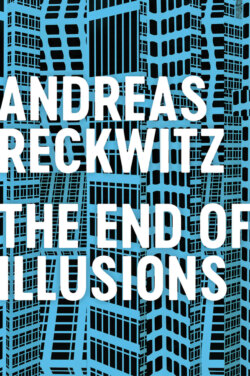Читать книгу The End of Illusions - Andreas Reckwitz - Страница 11
1 Cultural Conflicts as a Struggle over Culture: Hyperculture and Cultural Essentialism
ОглавлениеIn his much-discussed book The Clash of Civilizations, which was published shortly after the fall of the Iron Curtain, the American political scientist Samuel Huntington formulated an unsettling thesis.1 According to Huntington, the end of the conflict between the East and the West would not lead to everlasting peace. Instead, a new, more complex, and threatening conflict would emerge: a global struggle between cultures – between the West, Russia, China, India, the Arab world, and other parts of the globe. Huntington’s thesis was rejected at first. During the 1990s, the prevailing wind was one of unlimited liberal optimism and globalization, and most observers assumed that modernization (of a Western sort) would triumph worldwide. In fact, things turned out differently. What we see today is clearly an intensification of new cultural conflicts: terrorist attacks by Islamic fundamentalists, nationalistic tendencies in Eastern and Southern Europe, China’s and India’s self-confident defensiveness regarding their cultures, and finally the centrifugal forces of right-wing populism in the West itself (even in two of its core nations, France and the United States).
In light of the complexity of this conflict situation, it is easy at first to fall back on Samuel Huntington’s thesis about the clash of cultures. His thesis is seductive, but ultimately it is far too simple. Of course, both within national societies and on the global level, these conflicts are often and undoubtedly about culture, and the question of culture is closely tied to that of identity. Moreover, it is also the case that, in today’s late-modern societies, culture is attributed a level of significance that can hardly be overestimated. It is astonishing how often and intensively questions of culture – from the issue of “parallel cultures” to that of the “dominant culture” – become heated topics in public debates. Contrary to Huntington’s thesis, however, these conflicts should be seen not as a simple clash of cultures but as something different: a conflict about culture – that is, a debate over what should be understood by culture and what place it should take. Instead of an antagonistic struggle between diverse cultures and their cultural patterns, what we are witnessing in late modernity – and this is my opening thesis – is a far more fundamental conflict between two opposed regimes of culturalization, as I would like to call them. This is not a matter of various cultural patterns facing one another; rather – and on an even more fundamental level – there are two oppositional understandings of what culture means in general, and, accordingly, there are two contrary formats in which culture is organized.
In late modernity, the culturalization of the social is taking place on a broad front, and this process has assumed two different forms. On one side – and here I am speaking of “Culturalization I” – we observe a culturalization of lifestyles in which individuals striving for self-development surround themselves with cultural set pieces from a mobile global market. This is a cosmopolitan understanding of culture that can be called hyperculture. On the other side, we are witness to a form of culturalization that is directed toward collectives and constructs them as moral, identity-based communities. This process – “Culturalization II” – operates on the basis of an inside–outside dualism, and it follows the model of homogeneous communities, which are created as “imagined communities.” The corresponding model of culture is that of cultural essentialism, and it can be found in many forms. Late modernity is characterized by an elementary conflict between these two regimes of culturalization.
